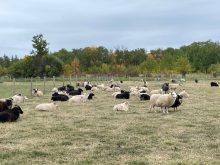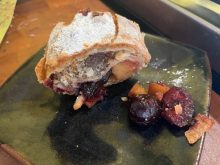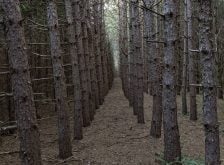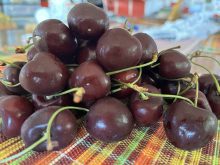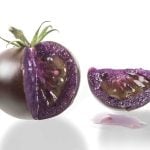We had a very cool spring in 2024, followed by a scorching summer for the third year in a row. So, how did the farm fruit gardens produce this year compared to previous years? The answer is “surprisingly well.”
Among my contacts across the Prairies from north to south, fruit production varied from good to exceptional. There may well have been lots of fruit tree damage in eastern British Columbia this past winter due to unusually cold temperatures, but Prairie fruit trees, grown from much hardier stock, did much better. While some damage did occur from a few days of -40 C to -45 C this past winter, most large- and small-fruit plantings fared very well.
Alberta Fruit Growers is an association that has met in mid-April and mid-September annually in Edmonton for the last 40 or so years. Its members and other Prairie growers now have proven apples, pears, plums, grapes, cherries and even apricots, producing quality fruit. Many nurseries from Quebec to British Columbia sell some of these newer proven cultivars. For example, the Evans cherry and the many dwarf cherry cultivars from the University of Saskatchewan are fully productive, from the northern U.S. states to Dawson Creek and Fort McMurray. Many of the very hardy plums, pears, apples, grapes and apricots originated from northern Europe and northern Asia.
Read Also

Gentle treatments for pain in the neck
Heading toward year-end, people unknowingly tense up against the cold and busyness, causing neck pain that can often be treated with appropriate support and gentle mobility, athletic therapist Kathlyn Hossack says.
READ MORE: Fruit growing on Prairie farms
You do not have to be a gifted gardener to grow any of these new and productive fruit trees, but you may need a few precautions to grow these Zone 2 to Zone 4 fruit trees. Such items as fencing and trunk protection are needed to protect the trees and shrubs from the deer family, porcupines, rabbits and voles. The rewards can be well worth the effort.
This year apples and cherries, which are self-fertile, were very productive. Plums, as good as or better than store-bought selections, were well pollinated despite the absence of pollinating insects. If plums are grown near wild plums, it seems wind pollination readily takes place, just as it does for our poplars and spruce trees. Some apples and pears produced less than expected but many varieties yielded very well. We now have Prairie-hardy pears and apples that are as good as any imported fruit — yes, Prairie backyard grown.
Unless fruit trees are grown very close to houses or farm buildings for a better microclimate, they do best on northwest- or northeast-facing slopes. I did an assessment of fruit orchards in Alberta, back some 40 years ago. The most productive and least damaged orchard trees (plums, apples, pears and cherries) grew on a steep hill at Rimbey, at the top of hill near Leduc and — biggest of all — on a northwest-facing hill at Camp Creek on the Pembina River north of Barrhead. Sun scorching and severe frost damage occur on unprotected south-facing slopes. Winter temperatures on hills are much higher than in valleys and northern aspects are not subject to spring sun damage. Remember: where do you find the best saskatoon bushes on the Prairies? You will always find them on the north-facing slopes. Check any east-to-west riverbank. The bigger trees grow on the south bank facing north. On the north bank facing south you have scrub and cacti, even as far north as Peace River.

Small fruit — that is, haskaps (a.k.a. honeyberries or sugarberries), black currants, red currants and gooseberries — were exceptionally productive this year. It seems the cold wet spring particularly favoured fruit set. Again, despite the virtual absence of bees or pollinating insects, with the exception of a few bumblebees, everything got well pollinated. Haskaps must be cross-pollinated but despite relative pollinator absence, yields were exceptionally good. I was very surprised by the bountiful yields.
Raspberries and strawberries did very well in the wetter areas of the Prairies — especially strawberries, since they need constant summer moisture. Both these berry crops should be replanted — every two years for strawberries and three to four years for raspberries — for optimal production.
All of the aforementioned fruit crops may be high in healthful anthocyanins or, in particular, vitamin C — especially black currants. It’s worth mentioning, though, that while boiling fruits or vegetables makes them easier to chew and eat it can destroy some or most of the vitamin C they contain.
Dogs and cats, by the way, and many other animals have the innate ability to synthesize their own vitamin C in their livers — whereas humans cannot. A deficiency of vitamin C causes a destructive disorder in humans called scurvy. It’s for this reason that British sailing ships in years gone by took on loads of vitamin-rich fruits when they were in tropical waters (hence the derogatory name “Limeys” applied to British sailors). Last week I even listened to a report on a Canadian radio station that several individuals in Toronto were in poor health suffering from scurvy. It seems their diets lacked either fresh fruits or vegetables that contain vitamin C.

Apple advice
If you grow apples, do not accept any harvested fruit from any urban areas. Unfortunately, most, if not all apple trees in the Edmonton area, for example, are infested with apple maggots. The first apple maggot outbreak occurred near a University of Alberta student residence. It’s theorized that apples brought from Ontario, where the maggots are widespread on wild apples, may well have been infested with apple maggots. Throw maggot-infected apples in any backyard and the maggots will leave the damaged apples and hibernate in the garden soil until the following spring. They will emerge around July 1 (Canada Day) and lay eggs in healthy developing apples. The only control right now in apple maggot-infested areas is to grow apples with some maggot resistance — or to bag each fruit with commercially available mesh bags that fit over individual apples.
Yes, we have bananas
No, we cannot grow them, but I’ve learned some excellent advice about them. I and all my family enjoy fresh bananas, but after buying several bunches personally I often had to throw away many overripe spoiled fruits. I mentioned this to a friend and she asked why I didn’t place the bananas in the refrigerator. I replied that they would turn black very quickly. Not so, was the advice. If I placed the green to yellowing fruits in the refrigerator, they would remain in prime condition in the refrigerator for three weeks or more. Bananas left on the kitchen counter lasted less than a week before they became inedible. I was wrong. When the ripening pale-yellow bananas were placed into the refrigerator and left for three weeks, they remained in virtually prime condition. The shiny banana skins did get duller in the refrigerator after a few weeks, but the now-chilled fruit remained in excellent shape. No more spoiled inedible bananas for my family.




